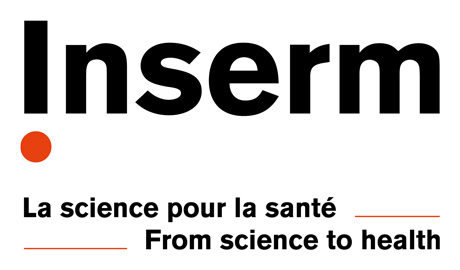





 Version française
Version françaiseMaria Ina Arnone
![]() Department of Biology and Evolution of Marine Organisms
Department of Biology and Evolution of Marine Organisms
Stazione Zoologica Anton Dohrn, Napoli, Italy
The Arnone group main focus is to elucidate how Gene Regulatory Networks evolved to guide diverse organogenetic processes.
Of particular interest to us is to understand which are the elements controlling the differentiation of the embryonic archenteron into a complex tripartite larval digestive tract equipped with distinct cell types regulating its function.
Patricia Beldade
![]() cE3c: Centre for Ecology, Evolution, and Environmental Changes
cE3c: Centre for Ecology, Evolution, and Environmental Changes
Faculty of Sciences, University of Lisbon, Portugal
I received a Ph.D. in Biology (Evolution and Development) from the University of Leiden (the Netherlands) in 2002. I am currently working in the Evolutionary Genetics group of cE3c. I am a professor of Evolutionary and Developmental Genetics at the University of Lisbon. My Eco-Evo-Devo research combines concepts and approches from Ecology, Evolutionary and Developmental Biology, as well as Genetics/Genomics to study patterns and processes underlying phenotypic variation and diversity.
My research has used different insect models to study topics such as genetic basis of intra-specific variation and inter-specific diversity, developmental constraints, evolutionary novelty, and phenotypic plasticity.
My current research is driven by two overarching objectives: 1) dissecting the genetic basis of phenotypic heterogeneity, including the origin and role of novel genes; 2) understanding the impact of complex environmental information on plasticity and adaptation, including in the context of climate change.
https://ce3c.ciencias.ulisboa.pt/member/patriciabeldade
Guy Bloch
![]() Dept. of Ecology, Evolution, and Behavior
Dept. of Ecology, Evolution, and Behavior
The Federmann Center for the Study of Rationality
The Hebrew University of Jerusalem, Israel
The main research interests of our group are the evolution and mechanisms underlying sociality and social behavior, we study bees as a model. To study these fascinating and intricate phenomena we integrate analyses at different levels, from molecular to social. In recent years, one of our main research focuses has been the interplay between circadian rhythms and social behavior ("sociochronobiology") but we also study additional important sociobiological processes such as size-related division of labor in bumblebees, the social evolution of juvenile hormone signaling, the interplay between sleep and social behavior, and the involvement of non-coding RNA and RNA editing in behavioral plasticity.
Wiliam Bourguet
![]() Center for Structural Biology
Center for Structural Biology
CNRS UMR5048 / INSERM U1054, Montpellier, France
Nuclear receptors (NRs) are master regulators of gene expression in humans. Their biological functions depend on their ability to bind other molecules such as ligands (hormones, vitamins, etc.), DNA and transcriptional coregulators. They are also the primary targets of many environmental endocrine disruptors that mimic the action of endogenous ligands and cause a wide range of diseases. A major interest of the group is to reach a detailed understanding of the mechanisms involved in the (de)regulation of nuclear receptor signaling.
http://www.cbs.cnrs.fr/index.php/en/home-equipea5
Chris Bowler
![]() Ecology and Evolutionary Biology Section, Institute of Biology of the Ecole Normale Supérieure (IBENS), Paris, France
Ecology and Evolutionary Biology Section, Institute of Biology of the Ecole Normale Supérieure (IBENS), Paris, France
The general goal of the studies is to understand the influence of the environment on genomes of plants and marine diatoms.
The ability to respond appropriately to a variable environment is essential for the survival of photosynthetic organisms in both terrestrial and aquatic environments. The mechanisms by which the environment can influence genome structure and dynamics are also likely to be important in driving evolution. In order to investigate these processes, we use Arabidopsis thaliana as a higher plant model, and the diatom Phaeodactylum tricornutum as a model marine phytoplankton.
Chris Bowler is the scientific coordinator of the Tara Oceans program
https://www.ibens.ens.fr/spip.php?rubrique36&lang=en
Steven Brown
![]() Chronobiology and Sleep Research Group
Chronobiology and Sleep Research Group
Institute of Pharmacology and Toxicology
University of Zurich, Switzerland
We study the molecular mechanisms of mammalian biological clocks and the ways in which they control behavior and physiology. Our approach is a broad one, and includes everything from in-vitro biochemistry and cell biology of cultured cells, to transgenic and knock-out mouse models, to genetic and clinical studies involving human beings.
www.sbrownlab.com
Graham Budd
![]() Department of Earth Sciences, Palaeobiology
Department of Earth Sciences, Palaeobiology
Geocentrum
Uppsala, Sweden
My work is centred on the so-called "Cambrian explosion", the rapid appearance of major animal groups in the fossil record some 520 million years ago, with a specialisation in the origin and early evolution of the arthropods. I am also interested in broad-scale evolutionary questions including the evolution of development and the organisms, and patterns of diversification.
https://katalog.uu.se/profile/?id=N96-3875
Annika Guse![]()
![]() Centre for Organismal Studies (COS)
Centre for Organismal Studies (COS)
Heidelberg University, Germany
Symbiotic associations enable organisms to adopt new ecological roles. Using the anemone model Aiptasia, we dissect the mechanisms, ecology and evolution underlying coral-algal endosymbiosis to learn how molecular interactions between distinct species lead to stable and complex ecosystems, which have co-evolved over millions of years.
Joëlle Rüegg
![]() Professor at Department of Organismal Biology, Environmental Toxicology
Professor at Department of Organismal Biology, Environmental Toxicology
Evolutionsbiologiskt Centrum EBC
Uppsala, Sweden
My research focusses on the question how early life exposure to endocrine disrupting chemicals (EDCs) affects human (neuro)development via epigenetic changes, i.e. long-lasting changes in gene regulation that do not involve alteration in the DNA sequence.
https://katalog.uu.se/profile/?id=N19-1421
Valérie Simonneaux
![]() Institute of Cellular and Integrative Neuroscience
Institute of Cellular and Integrative Neuroscience
Strasbourg, France
The Neuroendocrine Rhythms of Reproduction team studies the central and endocrine mechanisms that control the various rhythms related to reproductive activity in mammals.
https://inci.u-strasbg.fr/?page_id=443
Kristin Tessmar-Raible
![]() Professor for Chronobiology
Professor for Chronobiology
MFPL/Centre for Molecular Biology/ Rhythms of Life Platform
University of Vienna, Austria
The main interest of my lab is to investigate how solar and lunar light are sensed by the nervous system and how this light information impacts on the animals' information processing and endogenous clocks.
https://www.maxperutzlabs.ac.at/research/research-groups/tessmar
Jack van Loon
![]() University of Amsterdam, and European Space Agency (ESA), Technology Center (ESTEC), Noordwijk, The Netherlands
University of Amsterdam, and European Space Agency (ESA), Technology Center (ESTEC), Noordwijk, The Netherlands
Former President of European Low Gravity Research Association
https://npjmicrogravitycommunity.nature.com/users/80073-jack-j-w-a-van-loon